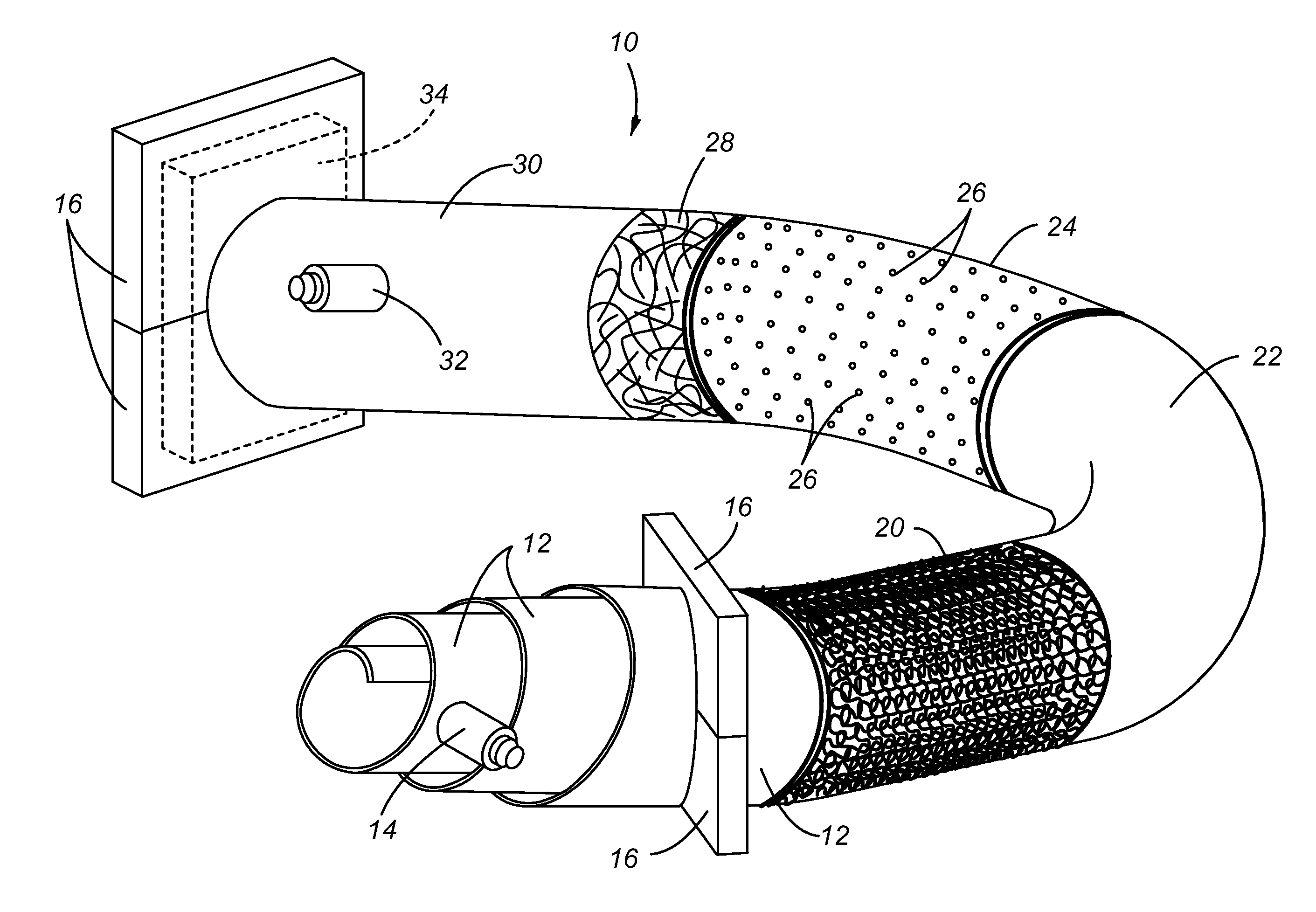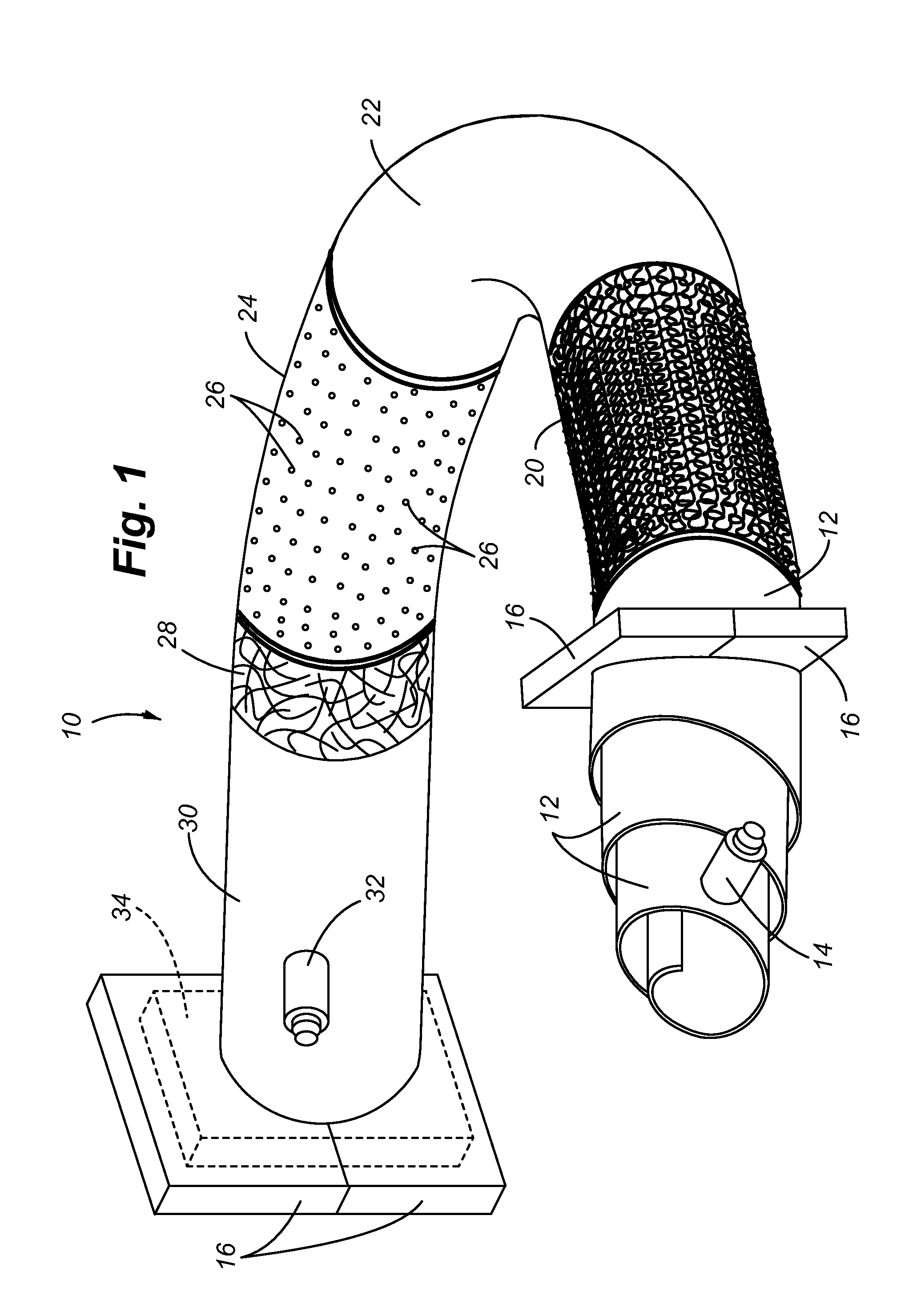RFID and product labelling integrated in knit composite tubes for fluid delivery system
a technology of composite tubes and product labels, applied in the field of composite tubes, can solve the problems of increasing the cost of labeling, increasing the cost of secondary or additional manufacturing steps, and unable to meet the wide electrical performance requirements of traditional fuel lines, and achieves the effect of avoiding all laminated seams or overlapping areas and low tooling costs
- Summary
- Abstract
- Description
- Claims
- Application Information
AI Technical Summary
Benefits of technology
Problems solved by technology
Method used
Image
Examples
Embodiment Construction
[0039]Referring to FIG. 1, a method of manufacturing the composite tube of the present invention is illustrated. The composite tube 10 is formed by a vacuum bag molding process. For illustrative purposes, the successive layers of material are shown as exposed. First, a spiraled inner bladder 12 is placed within the interior opening of a knitted reinforcement layer 20. The tubular knitted pattern formed for the reinforcement layer 20 is constructed with the previously described knitted pattern having a selected group of fibers formed in a plurality of loops. The inner bladder 12 is inflated through inflation port 14, in order to expand the knitted reinforcement layer 20 to a desired diameter or shape. Additionally, the knitted reinforcement layer 20 is shown as having a bend. The reinforcement layer can be knitted with the bend. This type of knitting to produce a bend could be similar to the formation of a bend in a woven garment, such as the heel portion of a knitted sock or slipper...
PUM
| Property | Measurement | Unit |
|---|---|---|
| thickness | aaaaa | aaaaa |
| diameter | aaaaa | aaaaa |
| size | aaaaa | aaaaa |
Abstract
Description
Claims
Application Information
 Login to View More
Login to View More - R&D
- Intellectual Property
- Life Sciences
- Materials
- Tech Scout
- Unparalleled Data Quality
- Higher Quality Content
- 60% Fewer Hallucinations
Browse by: Latest US Patents, China's latest patents, Technical Efficacy Thesaurus, Application Domain, Technology Topic, Popular Technical Reports.
© 2025 PatSnap. All rights reserved.Legal|Privacy policy|Modern Slavery Act Transparency Statement|Sitemap|About US| Contact US: help@patsnap.com



